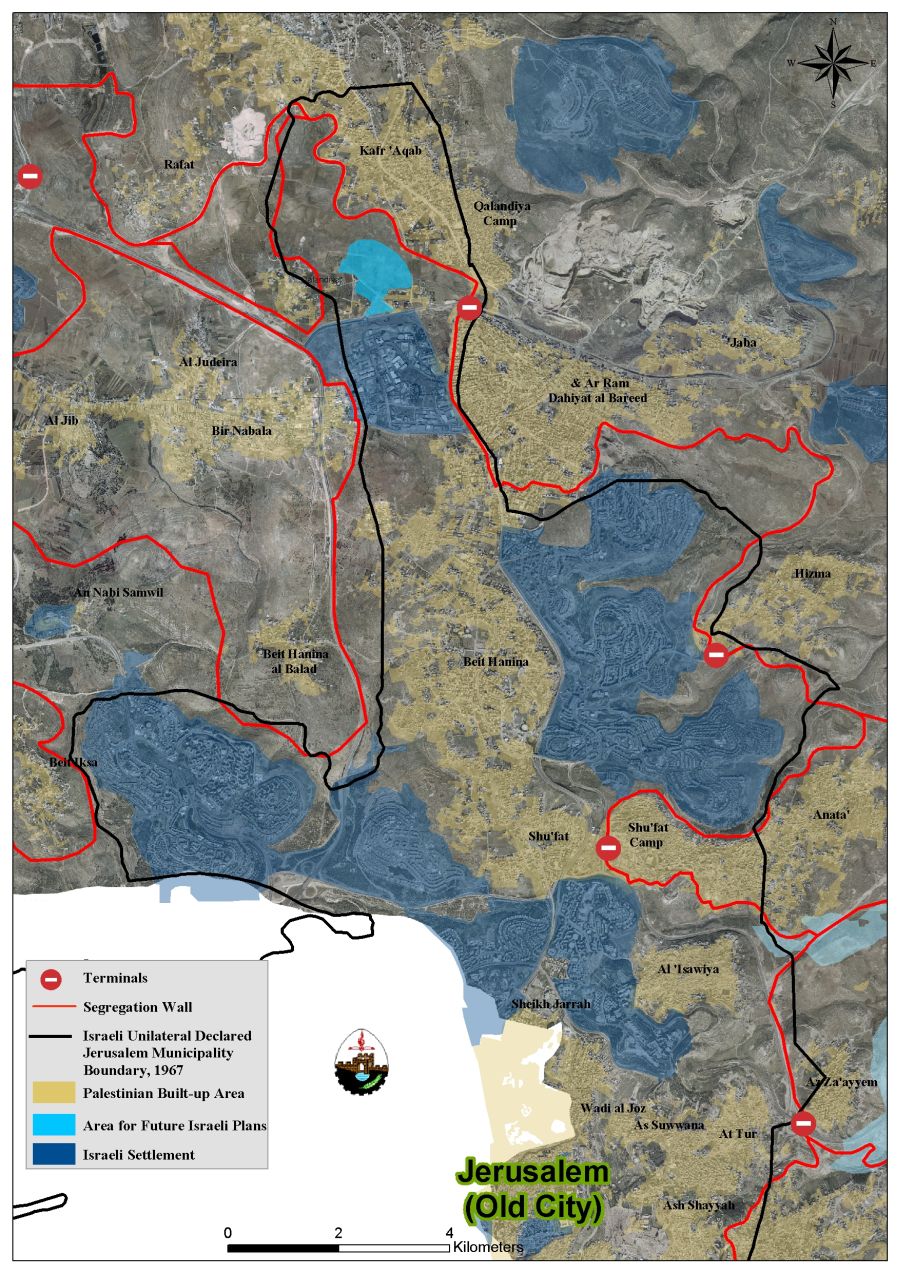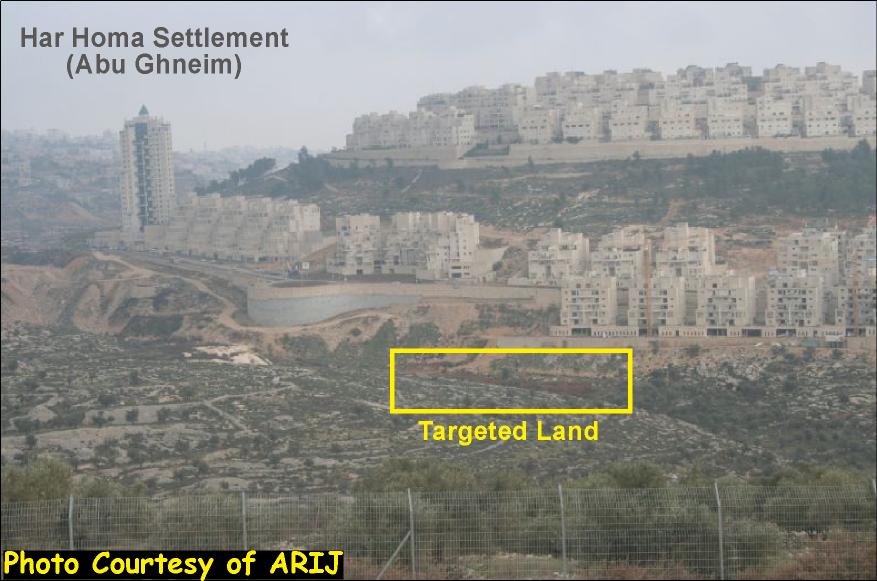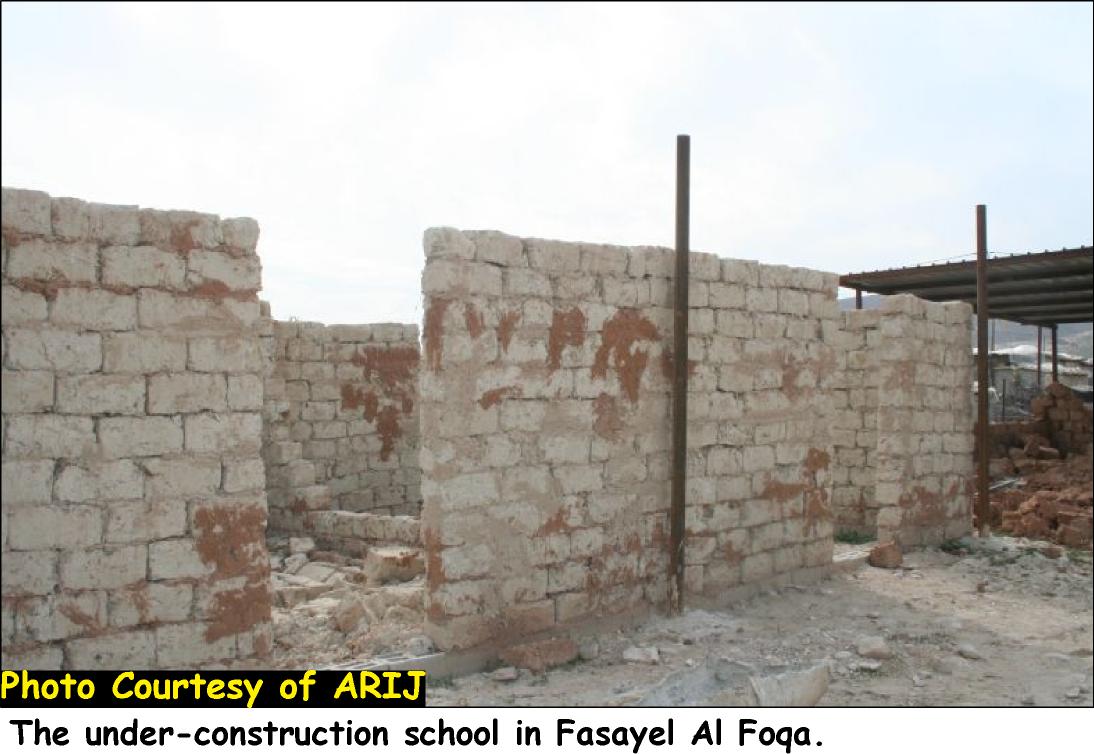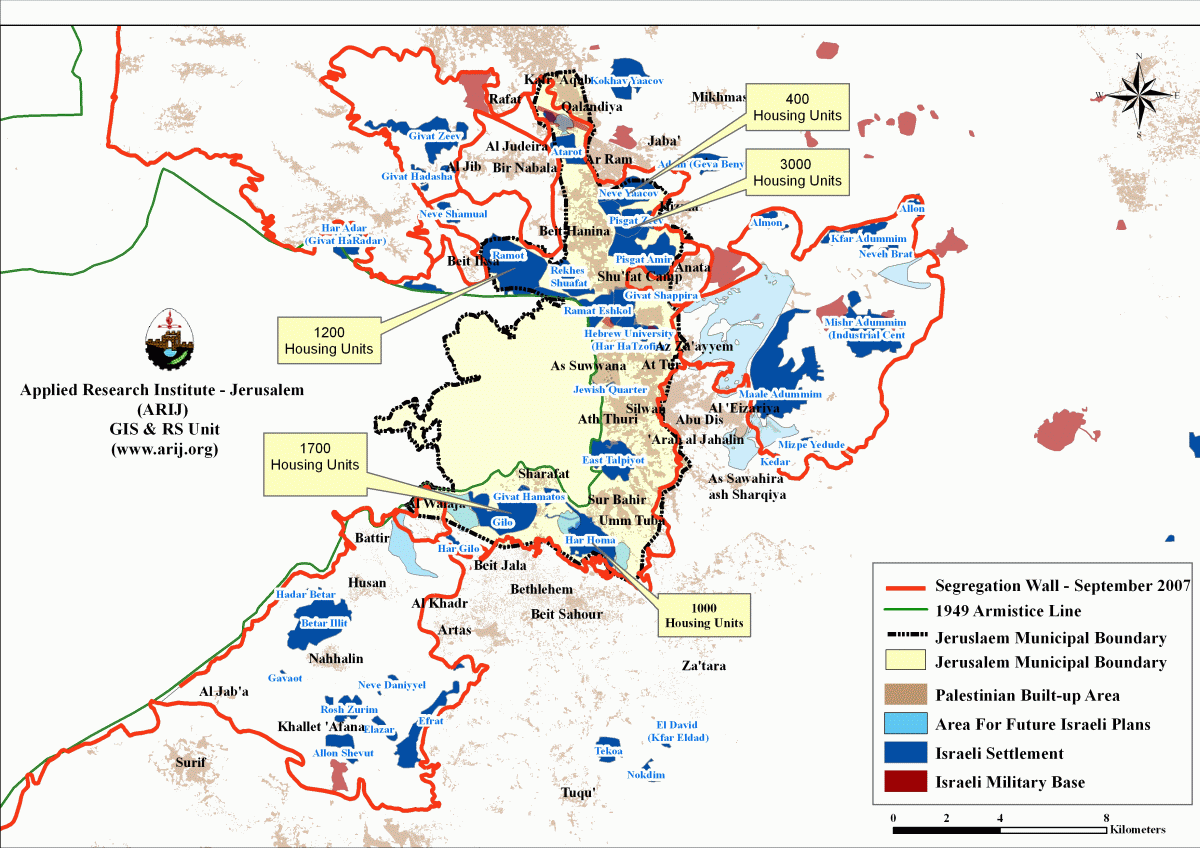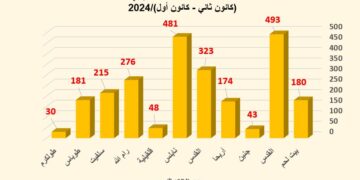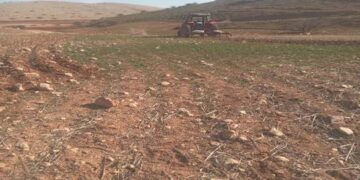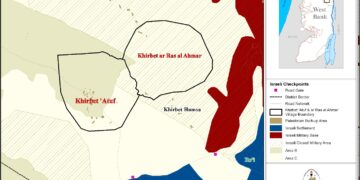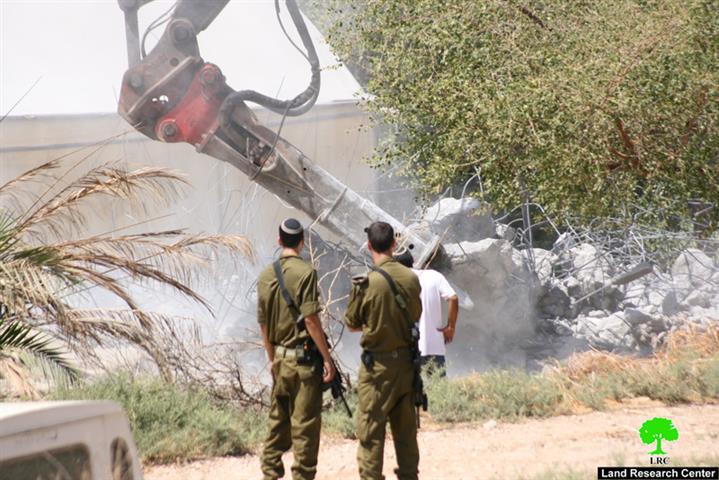Right after the time of the Annapolis meeting, which was held in the US state of Maryland in November 26, 2007 under the auspice of the US President George W. Bush and with the presence of the Israeli Prime Minister Ehud Olmert and the Palestinian President Mahmoud 'Abbas; Israel resumed its settlements' activities and violations in the Occupied Palestinian Territory, with particular emphasis with the Israeli defined boarder of Jerusalem city.
In reality, the Israeli activities act as 'encoded messages' intended for several parties:
-
To the Israeli people, to let them know that the Israeli government has no plans to relinquish �unified� Jerusalem and that it will remain under Israel�s control and thus any agreement with the Palestinians will not include Jerusalem.
-
To the Palestinians, it says that Jerusalem is not up for negotiations, and will not be on the agenda and any settlements� freeze will not include construction in Jerusalem�s neighborhoods for they are part of Israel.
-
To the US and the International Community at large, the message is that Israel's commitment to freeze settlements� construction will not include Jerusalem and that the occupied city will not be subject in the final status negotiations based on the 'Road Map,' which requires Israel to freeze all settlement activities in the West Bank including occupied East Jerusalem city.
The following lists all Israeli activities and violations in the occupied Palestinian territory, including occupied East Jerusalem, after Annapolis Meeting until the date of this report.
-
On December 1, 2007, The Israeli Municipality of Jerusalem in association with Jerusalem�s Israeli Development Authority announced the allocation of 20 Million NIS (5.5 million USD) to develop Atarot Industrial Zone.
-
On December 4, 2007, the Israeli Ministry of Housing and Construction issued tenders for 307 new housing units in the controversial Har Homa settlement (Abu Ghneim) southeast of Jerusalem city.
-
On December 11, 2007, the head of the Israeli Civil Administration Brigadier General Yoav Mordechai declared that there are hundreds, even thousands, of planned housing units in the West Bank that have building permits and do not need any further government approval to carryout their construction.
-
On December 15, 2007, the Israeli authority declared plan to construct 150 new housing units near Jabal Al-Mukkabir southeast of Jerusalem city. Furthermore, 7000 housing units are set to construct in �Ein Ya�al area inside the 1949 Armistice Line (Green Line) on lands confiscated from Al-Walajeh Village located southwest of Jerusalem city.
-
On December 18, 2007, the Israeli Ministry of Housing and Construction revealed that the plans for the 11000 housing units �Atarot� neighborhood (north of Jerusalem city, near Qalandyia Airport), which came to about in February 2007 has final approval.
-
On December 20, 2007, the Israeli Housing Minister Ze'ev Bo�im endorsed the decision of the Israeli Ministry of Housing and Construction by giving the green light to design plans for the new Jewish neighborhood in occupied East Jerusalem.
-
On December 23, 2007, the Israeli Ministry of Housing revealed that it has allocated 25 million dollars (18 million Euros) within its 2008 budget to expand the settlements of Ma�ale Adumim east of Jerusalem city and Har Homa at the south side of the city. The budget proposal includes the construction of 500 new housing units in Har Homa settlement, and 240 housing units in Ma�ale Adumim settlement.
-
On December 23, 2007, the Israeli Land Administration (ILA) revealed its proposal-plan to construct several hotels buildings in Gilo settlement located south of Jerusalem City on six dunums of land, with an option to turn these hotels plans to residential buildings when needed.
-
On December 30, 2007, the Israeli Land Administration issued tenders to build 440 new housing units in Armon Hanatziv neighborhood in East Talpiot settlement located south of Jerusalem city. The settlement was established in year 1973 on lands originally owned by Palestinians from Sur Baher and Jabal Al Mukabbir. Today, the settlement stands on 1829 dunums of lands and has more than 15000 Israeli settlers.
-
On January 3, 2008, the Israeli bulldozers demolished 12 caravans in Fasayel village in the Jordan Valley under the pretext of being unlicensed due to their location in an area classified by the Israelis as �closed Military Area.�
-
On January 7, 2008, a group of the Israeli right- wing activists claimed that they acquired some 20 dunums of lands located in close parameters east of Gilo settlement and opposite to 'Aida Refugee camp north of Bethlehem city, where they plan to establish new neighborhood there. Palestinian residents living near the targeted area stated that the targeted land belong to them but became isolated by the Israeli Segregation Wall constructed there since 2004, when they have been denied access to the land since then.
-
On January 8, 2007, a massive building campaign was kicked off in Har Homa Settlement� by Israeli Activists as a line of attack and a message to the US President�s visit to Israel. The groups thatorganized the campaign were: Land of Israel Faithful, Youth for Erez Israel, Women in Green, Homesh First, The committee to save the people and the land, Komemiyut, Maginei Eretz, Mattot Arim, Land of Israel Forum, VeYirashtem Otah, Local Action Committee and Committee for the Expansion of Homat Shmuel.
Furthermore, on January 8, 2008, the Israeli Municipality of Jerusalem gave approval for a plan to add 60 new housing units to Ma'aleh Zeitim Jewish quarter in the Palestinian Ras Al-Amoud neighborhood in East Jerusalem city where 51 Jewish families currently live. These families were brought into the place some 15 years ago with the support of the Jewish-American 'Irwing Meskovetch' (in California: AKA; Bingo King) who claimed his ownership of the lands at that time. The construction process went into operation a week later on January 15, 2008.
-
On January 10, 2008, The Israeli Army handed out residents of Kherbit Al Taweel southeast of Nablus city, 16 military orders warning them to demolish their houses under the pretext of being unlicensed.
-
On January 15, 2008, the Israeli Army bulldozers operating under the protection of the Israeli Army raided Wadi Al-Qalamoun and Umm Al-Khanazir lands on the western edges of Beit Ulla village northwest of Hebron city and razed 90 dunums of land cultivated with hundreds of Almond trees and destroyed 8 water wells under the pretext that these lands are classified as �State Land�. The targeted land were restored two years ago through a project financed by a European Donor Organizations and executed by the Palestinian Agriculture Relief with a total cost of $200,000.
-
On January 16, 2008, The Israeli Bulldozers razed 5 dunums of land and destroyed about 30 Olive trees in close parameters of Har Homa Settlement located north of Jerusalem city. Razed lands are located within the area isolated by the route of the Israeli segregation Wall and are owned by a number of Palestinian families from Bethlehem city.
-
On January 16, 2008, Eleven Jewish families guarded by Israeli police took over 11 Palestinian houses owned by Al Baydoun and Al �Ajlouny families in Silwan town and Wadi Al Hilwa area in the Old City of Jerusalem. Furthermore, two apartments and 5 dunums of land in Al Saloudha area near Al Magharbeh gate were equipped with surveillance cameras and other security equipments by the Jewish Committee 'Al �Ad' who claimed ownership of these houses.
-
On January 21, 2008, the Israeli authorities gave three new orders to demolish two other Palestinian houses and a school in Fasayel Village in the Jordan Valley under the pretext of being unlicensed due to their location in an area classified by the Israelis as 'closed Military Area'.
-
On January 21, 2008, Palestinians of Jaba�a and Wadi Fukin villages southwest of Bethlehem Governorate, received five military orders, issued by the Israeli Custodian of Absentee Land Property in the Israeli Army, warning them to evacuate their lands and to remove and dismantle all what exists on the lands, including trees, infrastructure and any installations under the pretext that the lands area classified as �State Land.�Total area of Lands cited in the orders is 71.2 dunums.
-
On January 23, 2008, The Israeli Ministry of Housing and construction, along with the Israeli Municipality of Jerusalem announced about new tenders to add 7300 new housing units in five Israeli settlements located within Jerusalem Municipal Boundaries. The settlements are Har Homa, Gilo, Pisgat Ze'ev, Neve Yacoov and Ramot.
|
No. of Housing Units |
Settlement Name |
No. |
|
1000 |
Har Homa |
1 |
|
3000 |
Gilo |
2 |
|
400 |
Neve Yacoov |
3 |
|
1200 |
Ramot |
4 |
|
1700 |
Pisgat Ze'ev |
5 |
|
7300 |
Total |
|
Source: Israeli TV � Channel 2
On its website, the Israeli Municipality of Jerusalem revealed on the 23ed of January 2008, a plan to build an overall 40,000 new housing units in Jerusalem city under what it calls a 'house for each worker.' The website also shows that 8,000 units have already been sanctioned, thus presenting the asymptotic between the two numbers 7,300 and 8,000.
On January 28, 2008, a Jewish right wing organization announced about plans to add 200 new housing units to Shim�on Tsedeq in Al Shiekh Jarrah neighborhood in East Jerusalem. The new plan is to be constructed on 18 dunums of land. The neighborhood is currently inhabited by seven Jewish families. Some 40 Palestinian families live in the targeted area and their houses are threatened with demolition to make room for the construction of the 200 Jewish units.
On February 2, 2008. the Israeli Higher Education and Jerusalem Development Authority proposed plans to build a new academic complex over 40 dunums of lands in Pisgat Ze�ev settlement north of Jerusalem city.
Pisgat Ze�ev settlement was established in 1985, on lands originally confiscated from Beit Hanina and Hizma towns north of Jerusalem. The settlement is a home to 41210 Israeli settlers and occupies a total land area of 1546 dunums.
On February 4, 2008, the Israeli Occupation authorities issued three military warnings to demolish three houses in Faro�un village and Khirbet Jubara under the pretext of being located close to the Israeli Segregation Wall path.
On February 5, 2008, the Israeli Occupation Army handed out residents of Qarawet Bani Hassan northwest of Salfit Governorate four military warnings to stop construction at their stuctures and demolish existing structures under the pretext of being unlicensed. Total threatened houses are 6 in addition to a wood store and carpentry store.
On February 7, 2008, the Israeli bulldozers demolished four residential shelters housing 18 people In Kherbit Al Hadidiyeh in the Jordan Valley. Sheep pens were also destroyed by the Israeli bulldozers under the pretext of being located in an area classified by the Israeli Authorities as 'Closed Military Area' where no Palestinian construction or land utilization is permitted.
On February 9, 2008, the Israeli Occupation Authorities handed out Deir Ballut Village council a military warning to demolish an under-construction school for primary education in the village under the pretext of being unlicensed.
On February 10, 2008: The Israeli Civil Administration threatened to demolish 11 Palestinian houses and a health clinic in Al Beqa�a valley in southern Hebron Governorate.
On February 12, 2008, the Israeli Minister of Housing and Construction Ze'ev Boim announced that bids to go out soon for 1,100 new housing units in Eastern Jerusalem of which 350 units will be constructed in Har Homa settlement south of the city and an additional 750 housing units in Pisgat Zeev north of Jerusalem city.
On February 12, 2008, the regional plan and building committee at Jerusalem Municipality is moving forward with plans to build 4,000 new housing units in Givat Hamatos settlement south of Jerusalem city.
On February 14, 2008, the Israel Land Administration (ILA) announced the winners of the tenders to build the 307 housing units in Har Homa settlement south of Jerusalem city. Companies who won the tenders are: Ir David, Dalia Eliasfor, Mei-Tal, Ish Hiram and Shahan – for sums ranging from NIS 17 million to NIS 1.5 million. The ILA is to receive some NIS 42 million for marketing the site, which is to be built on Har Homa's settlement eastern side.
On February 15, 2008, settlers of Masskiyot settlement located in the northern valleys constructed ten new housing units in the settlement in an attempt to relocate some of Gaza evacuees in the area.
On February 17, 2008, a group of Israeli settlers uprooted more than 30 Olive trees in Silwan neighborhood south of Al Aqsa Mosque.
On February 17, 2008, The Israeli army handed out Dhiab family in Jubara Hamlet (Kherbit Jubara) south of Tulkarm city a warning to demolish their house and an animal shed under the pretext of being located close to the Israeli Segregation Wall path.
On February 20, 2008, the Israeli daily newspaper 'Haaretz' revealed on its website that an unauthorized neighborhood comprising of 27 caravans is currently under construction at the settlement of Eli, near the Palestinian village of Al Luban Al-Sharqiyah north of Ramallah, on land privately owned by Palestinians. The work, which began one month ago, is underway to link the 27 trailers to infrastructure and is expected to complete in the few coming days.
On February 24, 2008, the Israeli Authorities handed out residents of Adh Dhahiriya, Dura and �Arab Al Ramadin communities south of Hebron city an amendment to military order # (5/183/T) to confiscate 766 dunums of lands for security purposes, to provide protection to the settlement of Eshkolot.
Prepared by
The Applied Reserach Institute – Jerusalem



